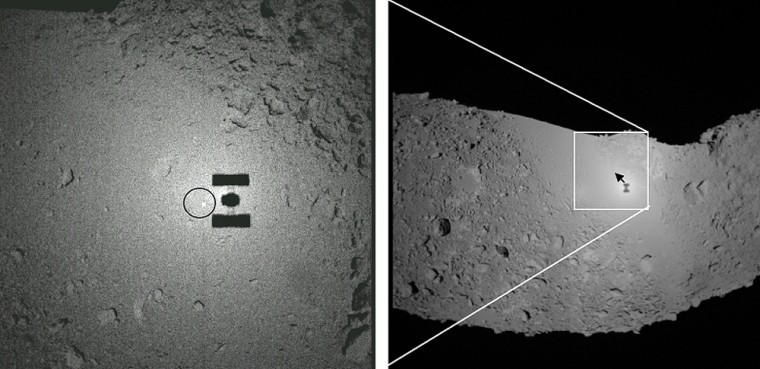Japan’s space agency said Wednesday that its spacecraft had successfully touched down on an asteroid 180 million miles (288 million kilometers) from Earth despite an earlier announcement that it had failed.
On Sunday, officials with the Japan Aerospace Exploration Agency, or JAXA, had said the Hayabusa probe — which is on a mission to land on the asteroid named Itokawa, collect material, then bring it back to Earth — failed to touch down after maneuvering within yards of the surface.
However, the agency said Wednesday that data confirmed Hayabusa had landed on the surface Sunday for a half-hour, although it failed to collect material.
JAXA officials had said earlier that Hayabusa dropped a softball-sized object as a touchdown target from 130 feet (40 meters) above the asteroid and then descended to 56 feet (17 meters) from the surface, at which point ground control lost contact with the probe for about three hours.
After analyzing data, the agency said the probe landed on the asteroid within about 99 feet (30 meters) of the initial landing target.
The agency officials were still analyzing the data and will decide by Thursday whether to conduct a second landing attempt Friday, according to Seiji Koyama, a spokesman for the space agency.
The mission has been troubled by a series of glitches.
A landing rehearsal earlier this month was aborted when the probe had trouble finding a site, and a small robotic lander that deployed from the probe was lost. Hayabusa also suffered a problem with one of its three gyroscopes, but it has since been repaired.
Hayabusa was launched in May 2003 and has until early December before it must leave orbit and begin its long journey home. It is expected to return to Earth and land in the Australian Outback in June 2007.
The asteroid is named after Hideo Itokawa, the father of rocket science in Japan, and is orbiting the sun between Earth and Mars. The space rock is 2,300 feet (700 meters) long and 1,000 feet (300 meters) wide.
Examining asteroid samples is expected to help unlock secrets of how celestial bodies were formed, because their surfaces are believed to have remained relatively unchanged over the eons, unlike those of larger bodies such the planets or moons, JAXA said.
A NASA probe collected data for two weeks from the Manhattan-sized asteroid Eros in 2001, but did not return with samples.
